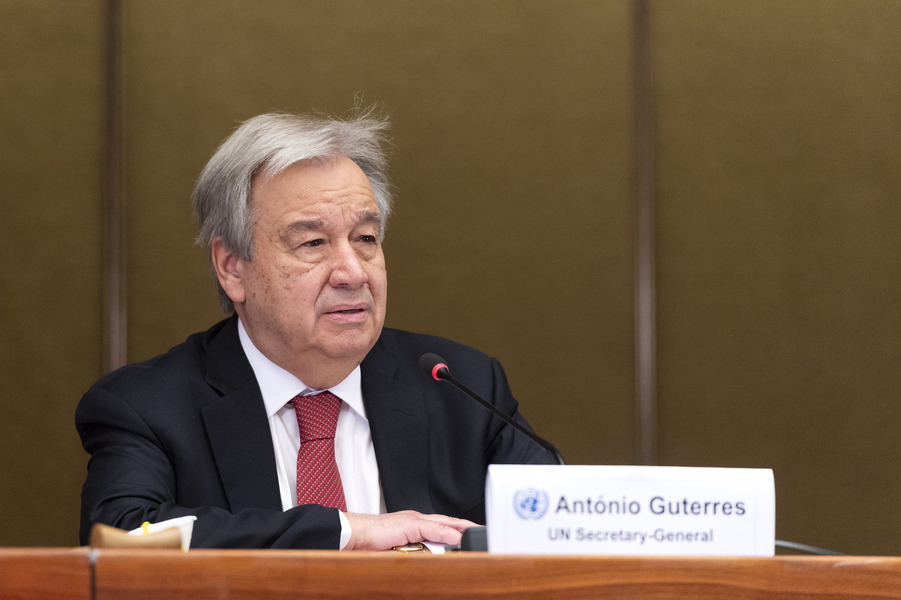Klaidman's Chronology of Changes to Drone Strike Procedures
Daniel Klaidman, author of the indispensible Kill or Capture (providing an inside glimpse into the evolution of the Obama administration's approach to counterterrorism in its first few years), today posted this profile of John Brennan in advance of his upcoming confirmation hearing. The piece is very useful for those seeking to understand the particulars of how the administrat
Published by The Lawfare Institute
in Cooperation With

Daniel Klaidman, author of the indispensible Kill or Capture (providing an inside glimpse into the evolution of the Obama administration's approach to counterterrorism in its first few years), today posted this profile of John Brennan in advance of his upcoming confirmation hearing. The piece is very useful for those seeking to understand the particulars of how the administration's approach to drones has evolved over time. I'm not sure how much of the detail actually is new--I'd have to think about that more carefully--but in any event it is very clearly presented, and hence quite useful on this dimension. I'd summarize the key points he reports as follows:
January 2009-December 2009: Almost immediately after coming into office, a mistaken strike in Pakistan draws the President's attention to the CIA's use of the signature-strike method there. Brennan defends it, emphasizing that CIA has Pakistan-specific expertise that makes them particularly good with this approach in that setting. The CIA at this stage does not have to come to the President for ultimate authority to authorize specific attacks, nor must it subject its target list nominations to an interagency process. The military, in contrast, must do both of these things for its activities in Yemen or elsewhere outside of Af/Pak (Klaidman describes a process designed by Brennan "to keep the military program in check," with DOD formally in charge of the target nomination process but "[d]ozens of officials from across the national security bureaucracy" having a voice in it and the President retaining the final authority to add names to the list).
December 2009 - Spring 2011: After Abdulmutallab's failed attempt on an airliner, DOD requested authority to use the signature-strike model in Yemen. Brennan and Obama said no. Unclear what rulese apply to CIA once it moves into Yemen. Status quo as to DOD remains in place.
Spring 2011: Following the Abbottobad raid, DOD again proposes signature strikes for Yemen, arguing that the time was ripe to knock out AQAP. Rebuffed again by Brennan and Obama; Obama underscores that our use of force in Yemen is about protecting against threats to the homeland, "not to get involved in a civil war." Status quo continues.
Late 2011: Brennan grows sufficiently frustrated with the DOD requests for approval for "larger strikes"that he decides to "bl[o]w up the decision making process and pull[] it into the White House." It's not entirely clear to me what this meant in practical terms, though Klaidman suggests that it was in large part a matter of whether the intelligence package supporting a given nomination was generated/developed by DOD (possibly how things were before) or instead by NCTC ("Brennan brought in the [NCTC] to put together profiles of potential targets."). Status quo stays in place for CIA in Pakistan.
April 2012: With AQAP surging in Yemen and Yemeni authorities urging the US to do something, Obama and Brennan at last authorize signature strikes there. Unclear whether this was specific to CIA, to DOD, or both. Also unclear if this authority continues today.
Early 2012-present: Efforts to develop the "playbook" governing counterterrorism disposition options go on for more than a year, with much infighting. A few things about it that Klaidman shares:
-- being a threat to "US interests" is not enough to justify lethal force off the battlefield (Klaidman writes this in a way that suggests that at some earlier point, it might have been otherwise)
-- not all members of a particular group are targetable with lethal force ("the document makes finely grained distinctions about where one must be in the chain of command ... to be targetable... A driver or cook, who can be easily replaced, may not represent the kind of unique threat that would warrant lethal action. A bomb maker, on the other hand, would.")
-- DOD and CIA agreed that the president should not make attack-specific decisions, and nearly prevailed in having the rules loosened for DOD on this point, but State and unidentified other agencies (DOJ?) objected and succeeded in preserving the status quo.
- Brennan reportedly sought to eliminate the exception whereby CIA uses of force remain free from interagency vetting. As has been previously reported, CIA ultimately cut a deal whereby its attacks in Pakistan will remain free from this process for one year. Sounds like the change will apply elsewhere immediately, however (of course, it may be that those non-Pakistan attacks already were subject to this rule).
Robert (Bobby) Chesney is the Dean of the University of Texas School of Law, where he also holds the James A. Baker III Chair in the Rule of Law and World Affairs at UT. He is known internationally for his scholarship relating both to cybersecurity and national security. He is a co-founder of Lawfare, the nation’s leading online source for analysis of national security legal issues, and he co-hosts the popular show The National Security Law Podcast.




-(1).png?sfvrsn=7aa9b087_9)
